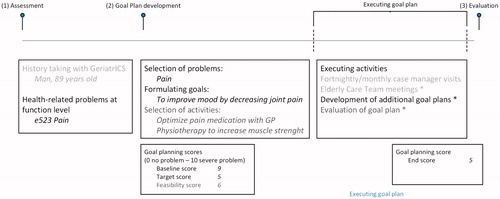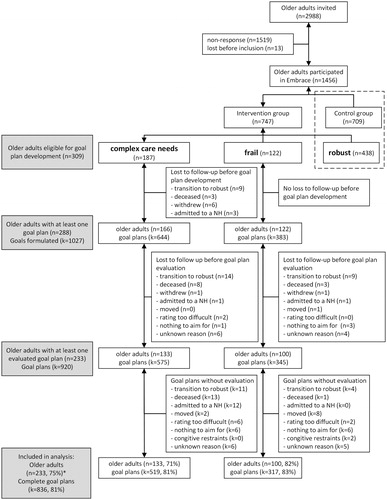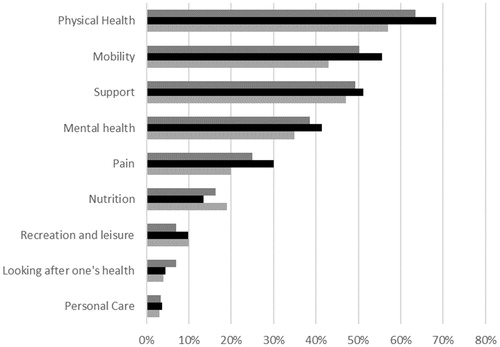Figures & data
Figure 1. Overview of the goal-planning process within Embrace, with two goal plan examples. GeriatrICS = Geriatric ICF Core Set, or not to the editor’s taste. Baseline score: The severity of a problem identified during the assessment. Target score: The score the older adult intended to attain by performing the planned activities to address the specific problem. End score: The severity of the health-related problem after at evaluation. Baseline score, target score, and end score are severity scores and range from 0 to 10 with higher scores indicating more severity. Feasibility score: The likeliness of a goal to be attained was rated to make older adult expectations explicit, discussed and adjusted accordingly. Score ranges from 0 (totally unlikely) to 10 (certainly feasible). Black: older adult in charge; Grey: older adult and the case manager mutually in charge; light grey: initiated by the case manager. In italic: example of care and goal plan.

Figure 2. Flowchart of inclusion of eligible older adults (n), separated for the complex care needs and frail risk profiles, and their goal plans (k). *Proportion of older adults (and goal plans) included in analysis of the sample eligible for goal plan development. NH: nursing home; n: number of older adults; k: number of goal plans; within grey box: older adults from control group and robust care profile: they did not receive individual support from a case manager and therefore formulated no goals plan.

Table 1. Baseline characteristics for the total older adult sample and for each risk profile.
Figure 3. Prevalence of goal plans (n = 836) among older adults (n = 233) and for each risk profile, categorized into six predefined clusters and three other highly prevalent ICF-categories. Dark grey: total sample; black: complex care needs; light grey: frail.

Table 2. Goal-planning results.
Supplementary_Table_S1.pdf
Download PDF (94.1 KB)Data availability statement
Dataset is available upon request from corresponding author.
